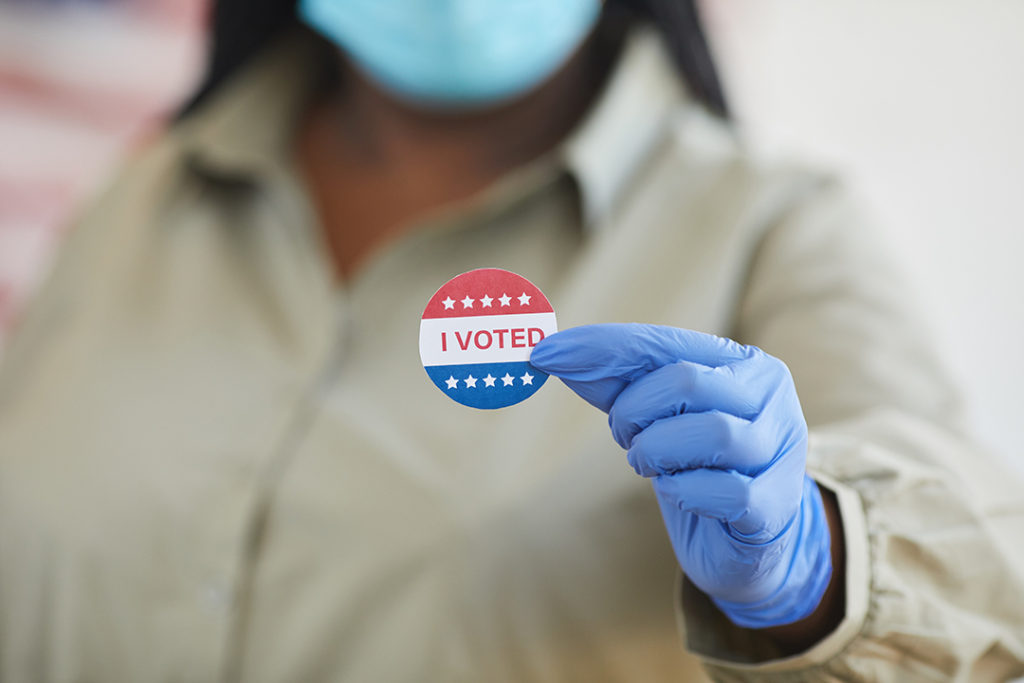
Advancing the right for all to vote by bringing technology closer to home.
Author: Jason Warner
The COVID-19 pandemic is bringing massive change to how we work, get entertainment, and teach. It is also showing that fundamental rights such as voting are more challenging for communities and citizens. The answer to voting is by embracing new technologies like Blockchain and Edge Computing to ensure all who can vote to have that opportunity.
Currently, we have in-person and mail-in votes. There is tremendous energy going into mail-in voting as a way to keep people safer from the virus and ensuring that the fear of the in-person risk of contracting the virus is mitigated. Once this election season is over, the energy has to move toward electronic means of voting to ensure better accountability and integrity. The future should include all three methods of voting.
- In-Person – the traditional way of going to the local voting location, voting, getting a cup of coffee and a cookie, and doing your duty to participate in the future of the country
- Mail-in – absentee mail-in ballots have been available for decades with some states like Colorado going to 100% mail-in ballots
- Technology-based systems that allow individuals to log-in and cast their ballots after validating their identity
If we can check our bank accounts and send money via PayPal, we can create a technology-based platform for voting. The questions become:
- How do we create the platform so that the voter’s data is protected and counted?
- How do we prevent hackers from manipulating the data?
- How do we educate and prepare voters to use the system?
Blockchain technology creates an immutable record that is traceable and auditable. It is also personally manageable so that the individual controls the majority of their identifiable information. The concerns about mail-in voter fraud, ballot harvesting, etc. are virtually eliminated because we can create multi-factor login authentication that can combine voiceprint, fingerprint, image recognition, and other ways to ensure the voter is who they say they are. All of this information can also be stored on the Blockchain, rather than in a central database to further drive security from hacking.
Edge Computing can support the processing of information locally and then sync with the cloud. The capability to ensure near-perfect voter integrity is only achieved with technology platforms as discussed. As voters, we also don’t know if our information is used in other ways by the government or other entities. By moving to an Edge Computing, Blockchain stored voting platform, voter-provided information stays within the control of that voter. Then, they have the right to give that information to others rather than giving it up to the platform provider and government.
We won’t move to a complete technology voter platform within the next few years, but we can lay the groundwork for allowing choice in how votes get cast. Imagine:
- Not having to rush home from work to meet the cutoff time of in-person voting
- Not worrying whether your vote is getting to the counting locations via the mail
- Knowing that your vote is trackable and is recorded in an immutable and auditable system
Fast forward ten years; logging in to your voter system like you do your bank account, casting your vote, and knowing it will be counted. Only technology solutions can provide the peace of mind that your vote is counted and the pride that you have participated in one of the most important responsibilities of our lives.
Fortress Data Centers is making technology like Edge Computing and Blockchain work by providing Mission-Critical Colocation, 5G enabled connectivity, Software-Defined Networks, and more. At Fortress Data Centers, We Are Here, on the Edge with you.